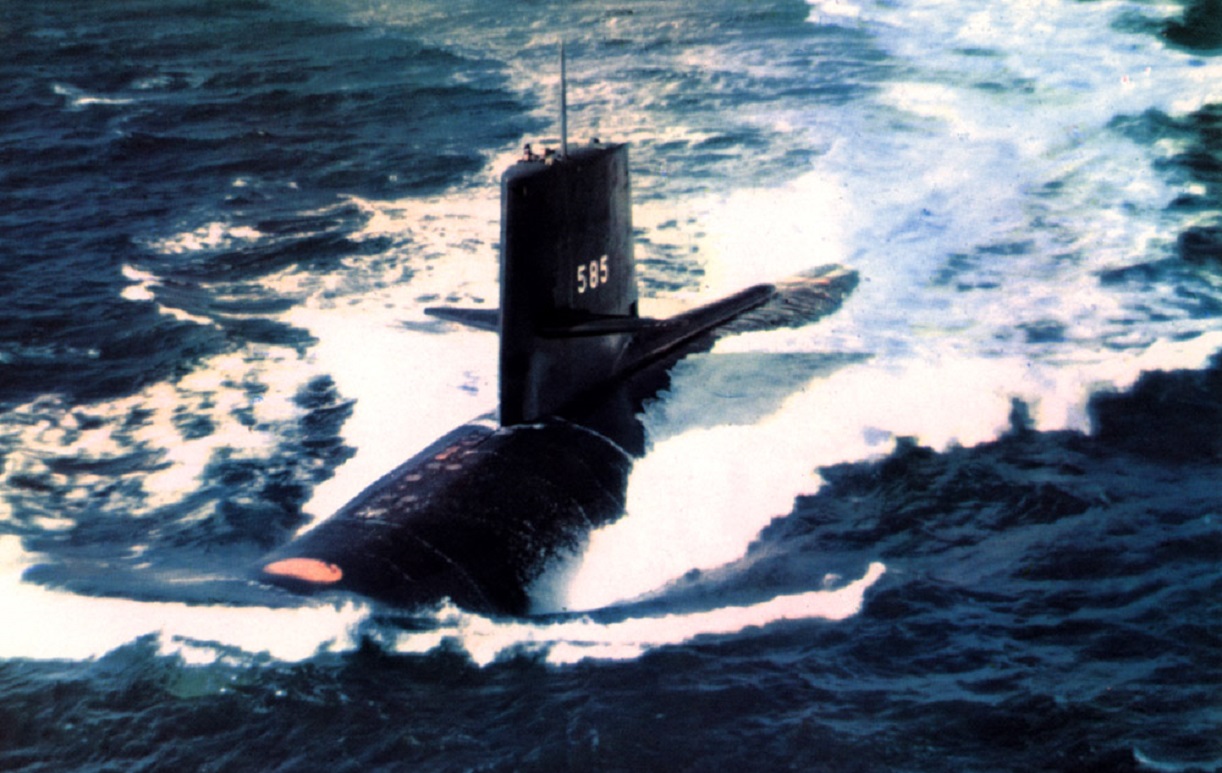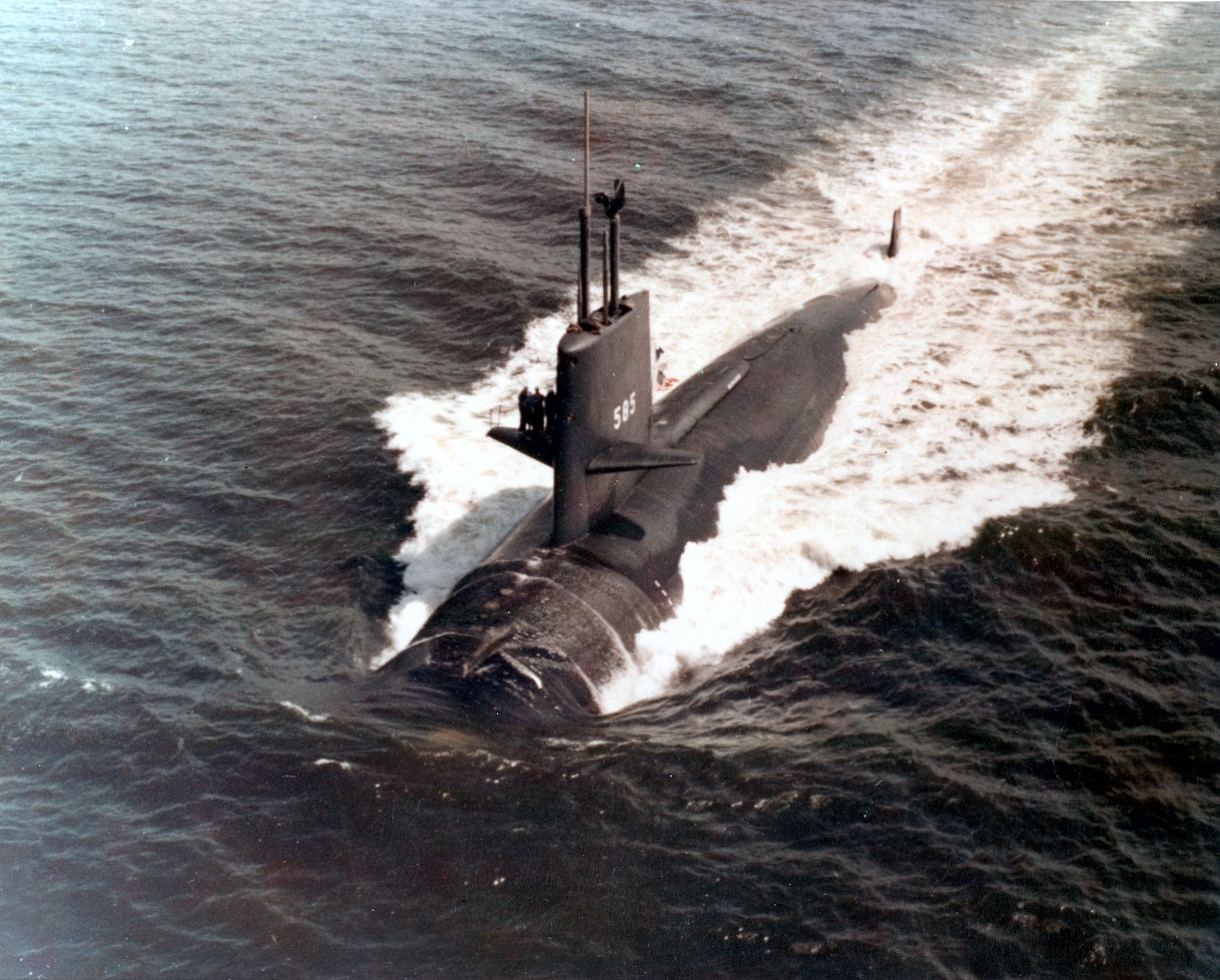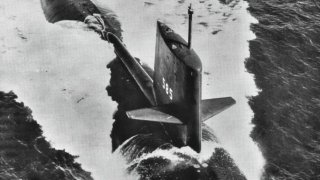Skipjack-Class: The Nuclear Attack Submarine That Transformed the U.S. Navy
The Skipjack-class submarine, operational from the late 1950s to 1990, marked a significant evolution in submarine design for the U.S. Navy, introducing a high-speed teardrop hull and nuclear power.
Summary: The Skipjack-class submarine, operational from the late 1950s to 1990, marked a significant evolution in submarine design for the U.S. Navy, introducing a high-speed teardrop hull and nuclear power. This design originated from experiments with the USS Albacore, which aimed to enhance underwater speed and maneuverability through hydrodynamic testing. The Skipjack's streamlined shape and use of HY-80 high-strength steel set new standards in submarine construction, influencing not only subsequent U.S. naval designs, including the George Washington-class ballistic missile submarines, but also submarine development worldwide. Its legacy underscores the transformative impact of integrating advanced technology and innovative design in naval engineering.
Skipjack-Class Submarines: Pioneering Modern Naval Design
Submarines have evolved gradually from their inception, when they were basically just submersible tubs. Today, however, the submarine is a remarkable machine, worth billions a piece, and loaded with sophisticated sonar, ergonomics, and weaponry.
But the progression, from submersible tub to nine-figure marvel, was slow and incremental. Yet, some of the progress was more dramatic; a few models offered breakthroughs that helped to shepherd submarine design notably closer to where we are today.
One such breakthrough was the Skipjack-class submarine, which was built between 1956 and 1961, and served in the U.S. Navy until 1990.
Three decades of venerable service
According to defense writer Kyle Mizokami, the Skipjack was “arguably the first truly modern postwar submarine of the U.S. Navy.” The Skipjack offered two innovations: a high-speed hull design and nuclear power. Accordingly, the fish-shaped Skipjack became the “basis of all future American submarines up to the present day.”
The technical name for the fish-shaped hull is the “teardrop hull,” which prioritizes and enhances submerged performance over surfaced performance, intuitively. The teardrop hull was commonly found in early submarine designs, but toward the middle of the twentieth century, the teardrop fell from fashion on account of changing naval doctrines. The teardrop hull enjoyed something of a renaissance during World War II, when the Nazi Kriegsmarine, in an experiment to mitigate severe U-boat losses, introduced the teardrop hull. Fortunately, the Nazi regime collapsed before it could produce teardrop-hulled submarines in meaningful numbers—but the Nazi experiments registered with the greater naval community, pushing the teardrop back into the mainstream. Shortly after the conclusion of the war, the teardrop hull was reinstalled as the standard hull for submarines—as the Skipjack would demonstrate about one decade later.
The United States and the teardrop hull
America’s experiment with the teardrop hull commenced with the USS Albacore, a research submarine that used hydrodynamic and wind tunnel testing to design a remarkably fast and remarkably maneuverable hull.
The research gleaned from the Albacore was built into the Skipjack, which offered a significant advancement over its predecessor, the Skate-class. Unlike the Skate, the Skipjack was completely streamlined, much like an aerial blimp, with just one screw aft of the rudders to maximize underwater speed and maneuverability.
The use of just one screw was a controversial decision. A double screw offers redundancy (and hence safety), which had been the Navy’s preference. The move to one screw, however, demonstrated how committed the Skipjack designers were to prioritizing performance.

The Skipjack used the same HY-80 high-strength steel that had proven successful with the Albacore. HY-80 was renowned for its yield strength of 80,000 pounds per square inch.
The Skipjack’s hull, built from HY-80, would become her hallmark, “later used as the basis of the first purpose-built fleet ballistic missile submarines, the USS George Washington-class,” Mizokami wrote.

But it wasn’t just American submarines that the Skipjack would influence. “The design was so successful that it provided a basis for future submarines, not only in the United States but elsewhere around the world.”
Serving through the 1960s, 1970s, and 1980s, the Skipjack would not be retired until 1990—three decades after first entering service.
About the Author: Harrison Kass
Harrison Kass is a defense and national security writer with over 1,000 total pieces on issues involving global affairs. An attorney, pilot, guitarist, and minor pro hockey player, Harrison joined the US Air Force as a Pilot Trainee but was medically discharged. Harrison holds a BA from Lake Forest College, a JD from the University of Oregon, and an MA from New York University. Harrison listens to Dokken.
Image Credit: Creative Commons.


